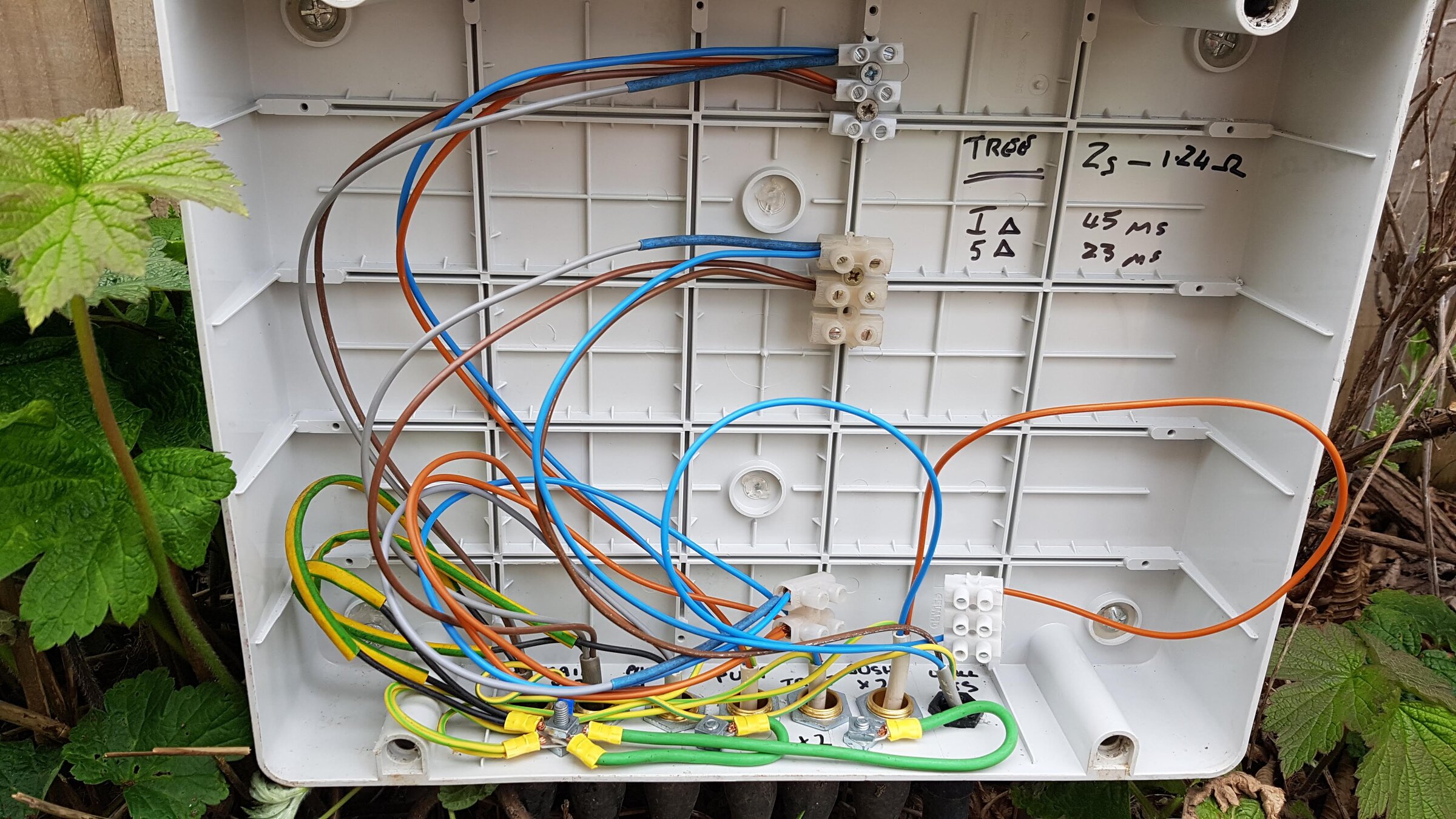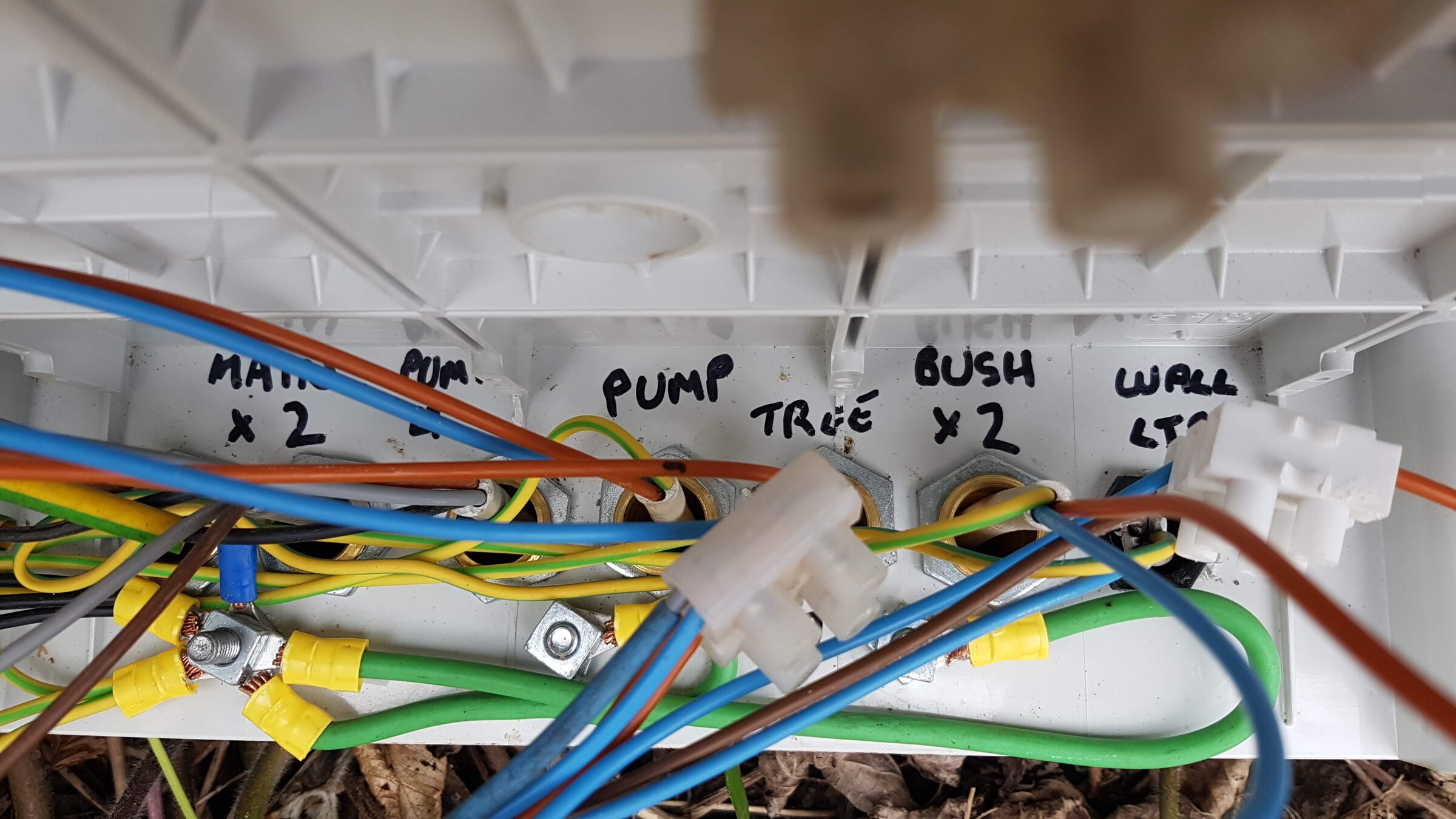We already have a number of garden lights, installed around 4 years ago. A 1.5mm SWA runs from the house to a waterproof box in the garden and from the box are 4 runs of lights; 3 SWA runs, each with 2 spotlights using 3W LED bulbs and a run of cable to 6 wall lights, each with 2.5W LED bulbs. So that it 33W in total over a distance of about 150m, 100m of which is buried SWA. The 1.5mm SWA from the house is connected to a 6A MCB which is on an RCD protected circuit and is operated by a light switch.
What the missus would like to do is to run a new 20m length of festoon lights (40 bulbs, probably 1W or maybe even 0.5W each). I have a couple of issues.
All the festoon lights I've looked at come with a 3 pin plug, so expect to be plugged into an appropriate internal or waterproof socket and we don't have either! It has crossed my mind to remove the plug and simply connect them up to the supply in the waterproof box, obviously ensuring the exit of the cable is waterproofed.
I have a few issues doing this:
1. I feel a little uncomfortable cutting the moulded plug from a supplied "light fitting".
2. I lose the fuse protection provided by the plug.
3. My wife wants to be able to unplug the lights, which will be hung along a 20m length of pleach hedge, so that she can cut the hedge more easily. So, ideally, I need to be able to unplug the lights a couple of times a year.
I wondered if it is possible to purchase a waterproof plug and socket, allowing me to connect the socket upto the wiring in the garden wiring box and connect the new lights (with the existing plug removed) to the waterproof plug. I suspect this still wouldn't provide fused protection!
I would appreciate some advice on the best way to achieve the above. Also, if anyone has a good experience of a particular brand of festoon lights (there are lots to look at), that would be very useful.
What the missus would like to do is to run a new 20m length of festoon lights (40 bulbs, probably 1W or maybe even 0.5W each). I have a couple of issues.
All the festoon lights I've looked at come with a 3 pin plug, so expect to be plugged into an appropriate internal or waterproof socket and we don't have either! It has crossed my mind to remove the plug and simply connect them up to the supply in the waterproof box, obviously ensuring the exit of the cable is waterproofed.
I have a few issues doing this:
1. I feel a little uncomfortable cutting the moulded plug from a supplied "light fitting".
2. I lose the fuse protection provided by the plug.
3. My wife wants to be able to unplug the lights, which will be hung along a 20m length of pleach hedge, so that she can cut the hedge more easily. So, ideally, I need to be able to unplug the lights a couple of times a year.
I wondered if it is possible to purchase a waterproof plug and socket, allowing me to connect the socket upto the wiring in the garden wiring box and connect the new lights (with the existing plug removed) to the waterproof plug. I suspect this still wouldn't provide fused protection!
I would appreciate some advice on the best way to achieve the above. Also, if anyone has a good experience of a particular brand of festoon lights (there are lots to look at), that would be very useful.





